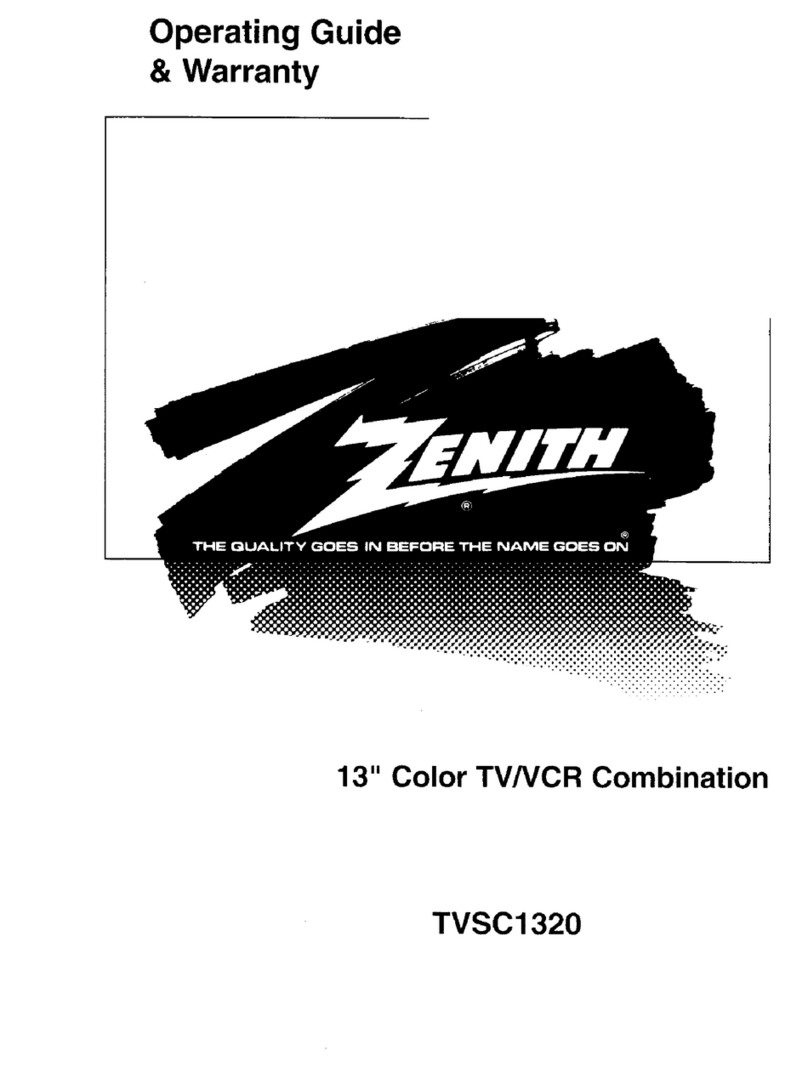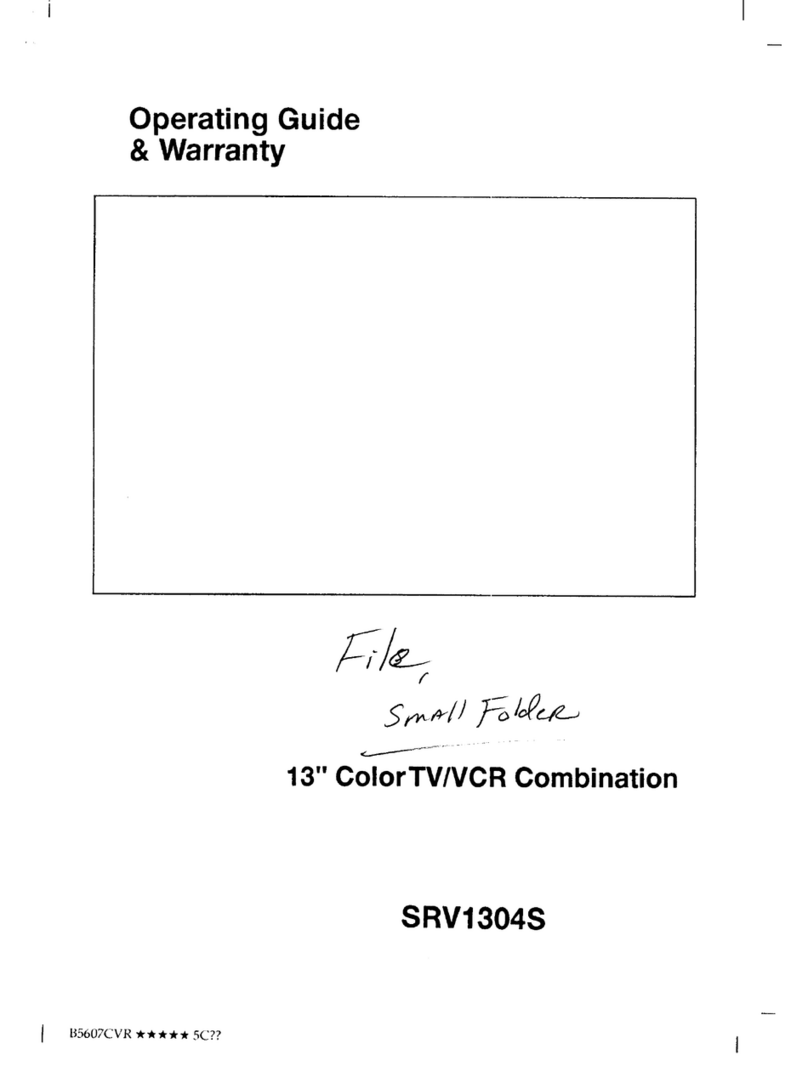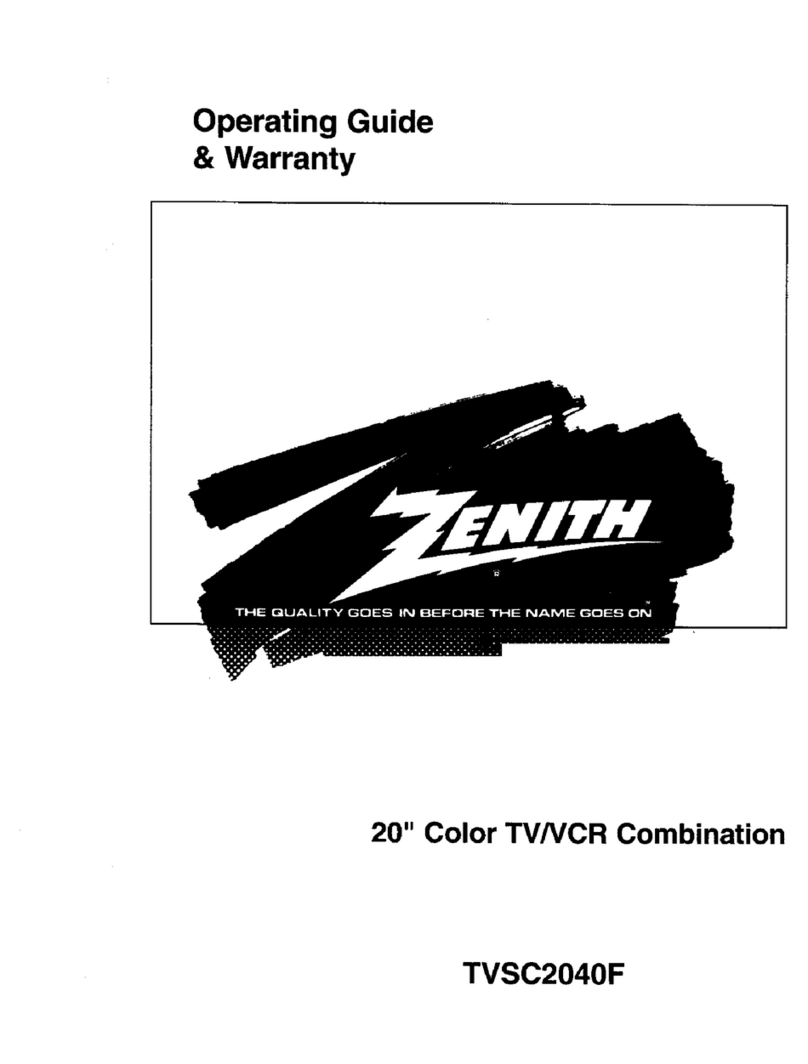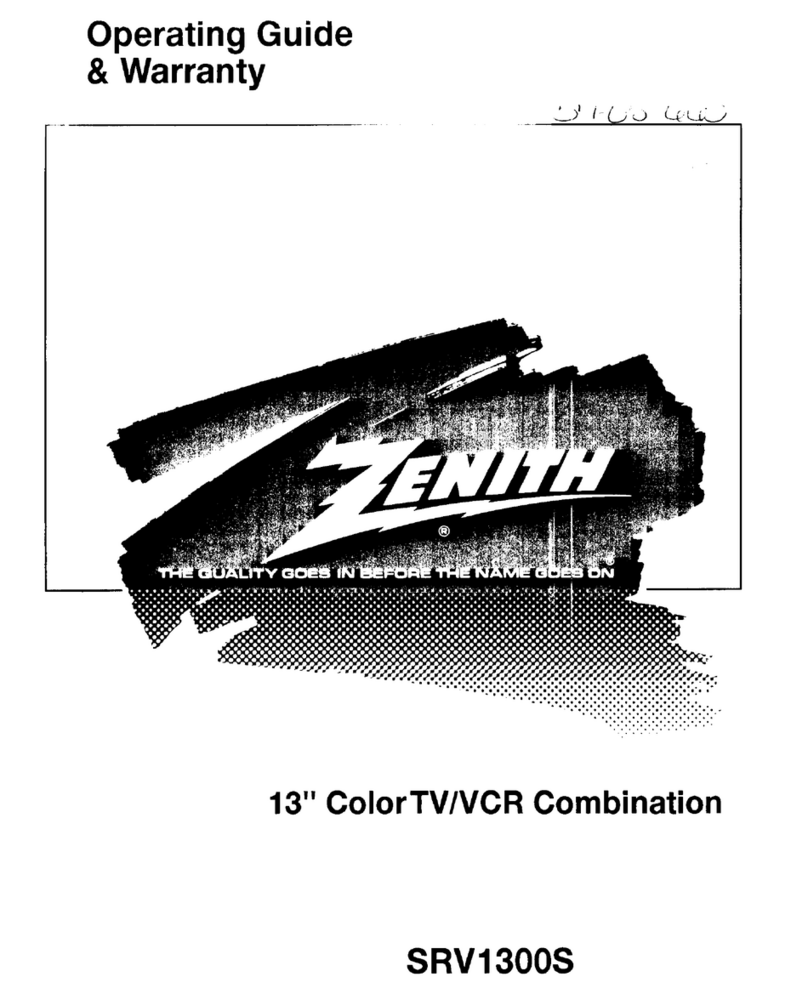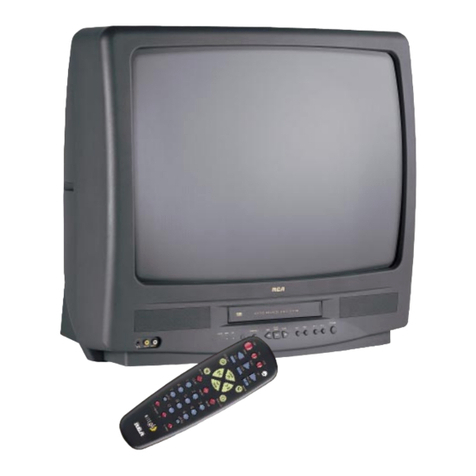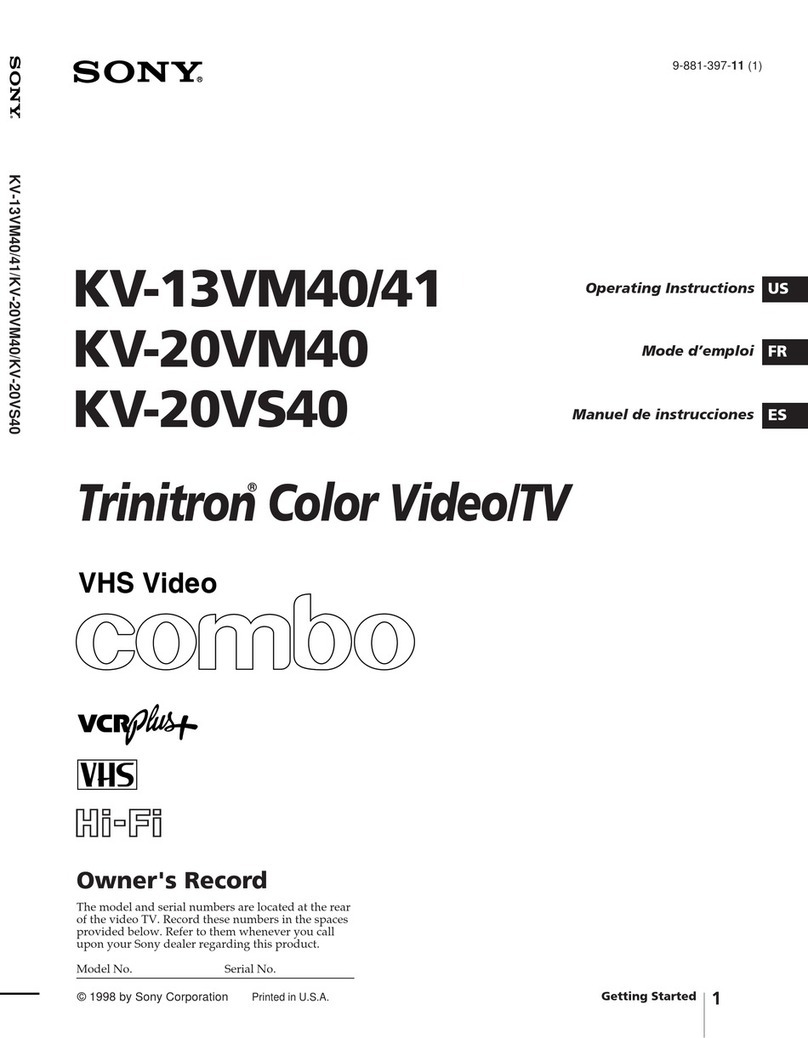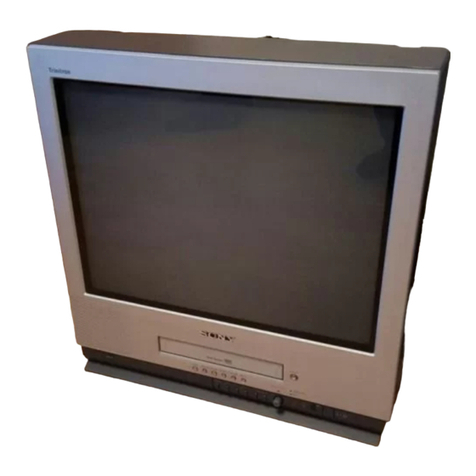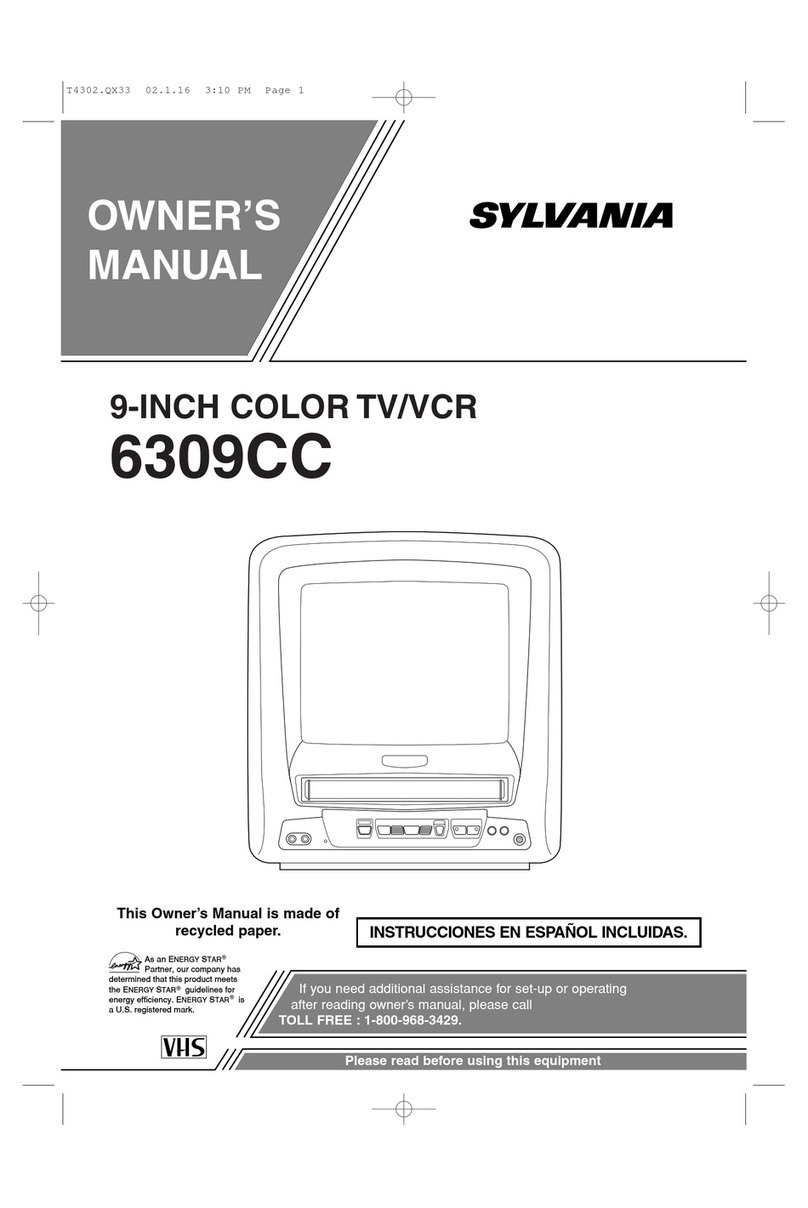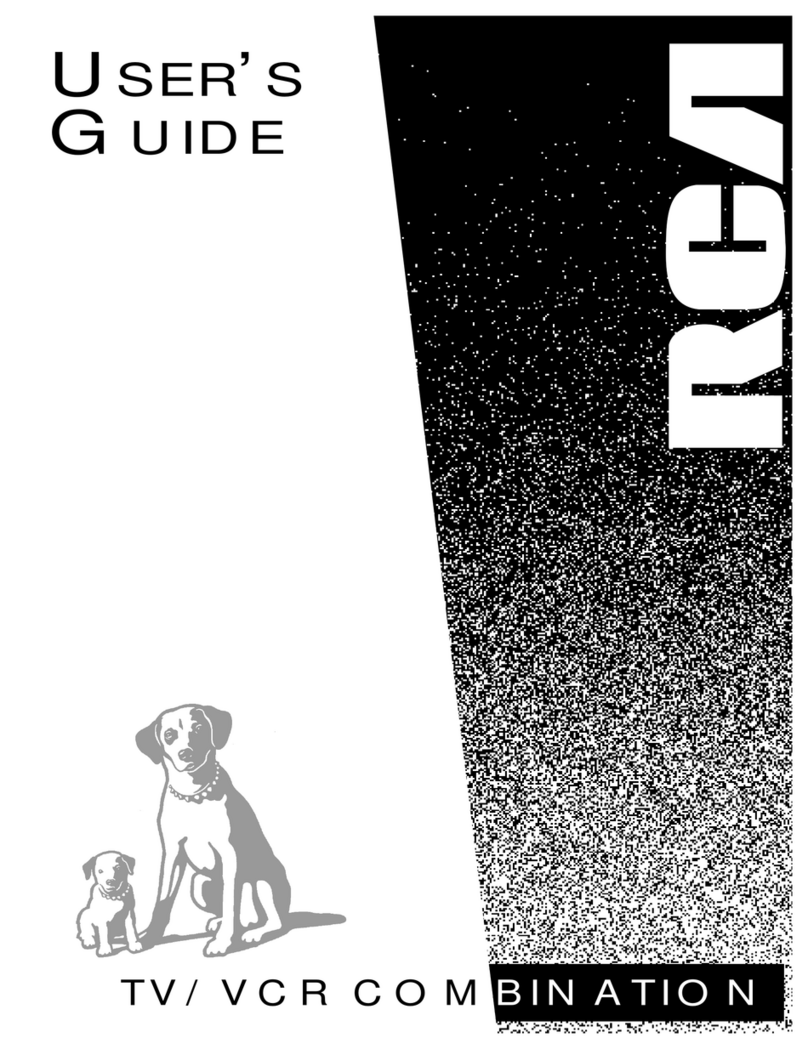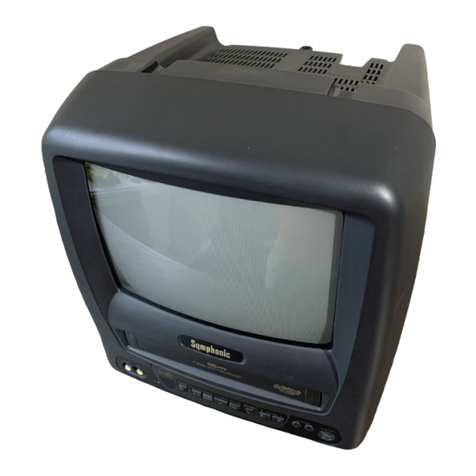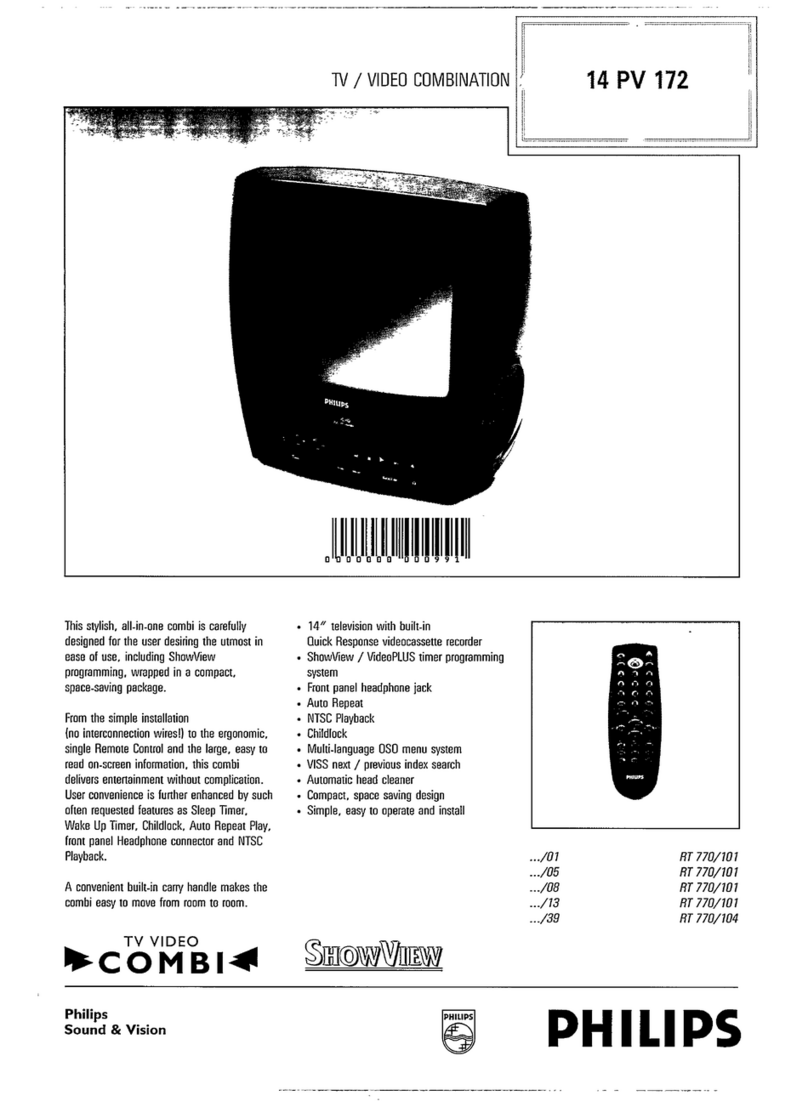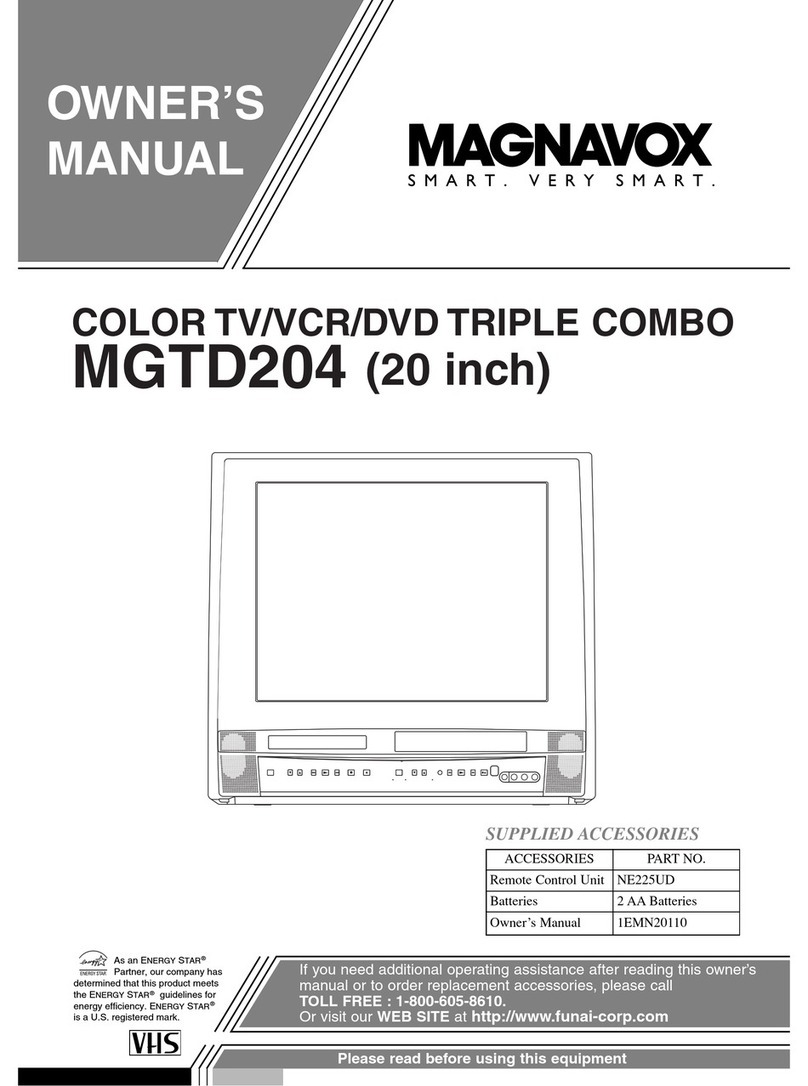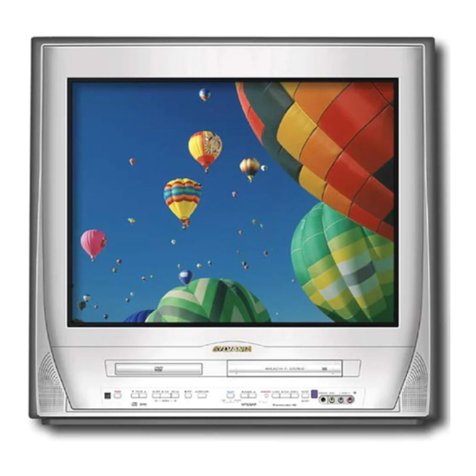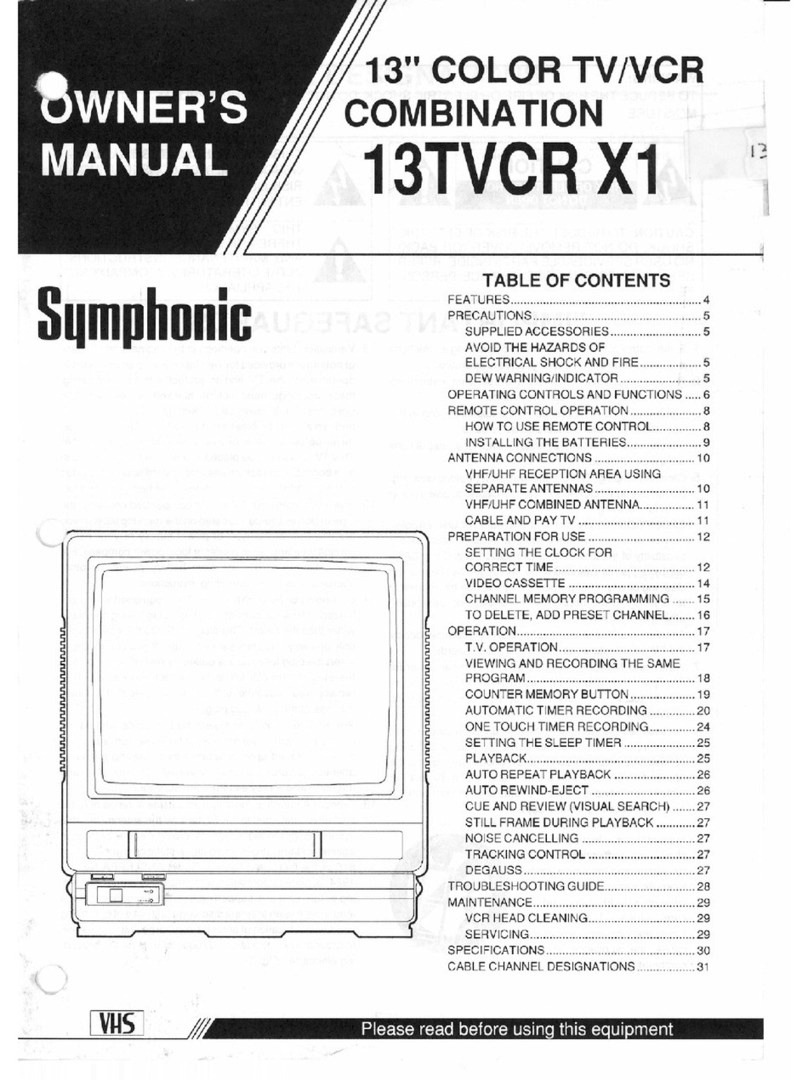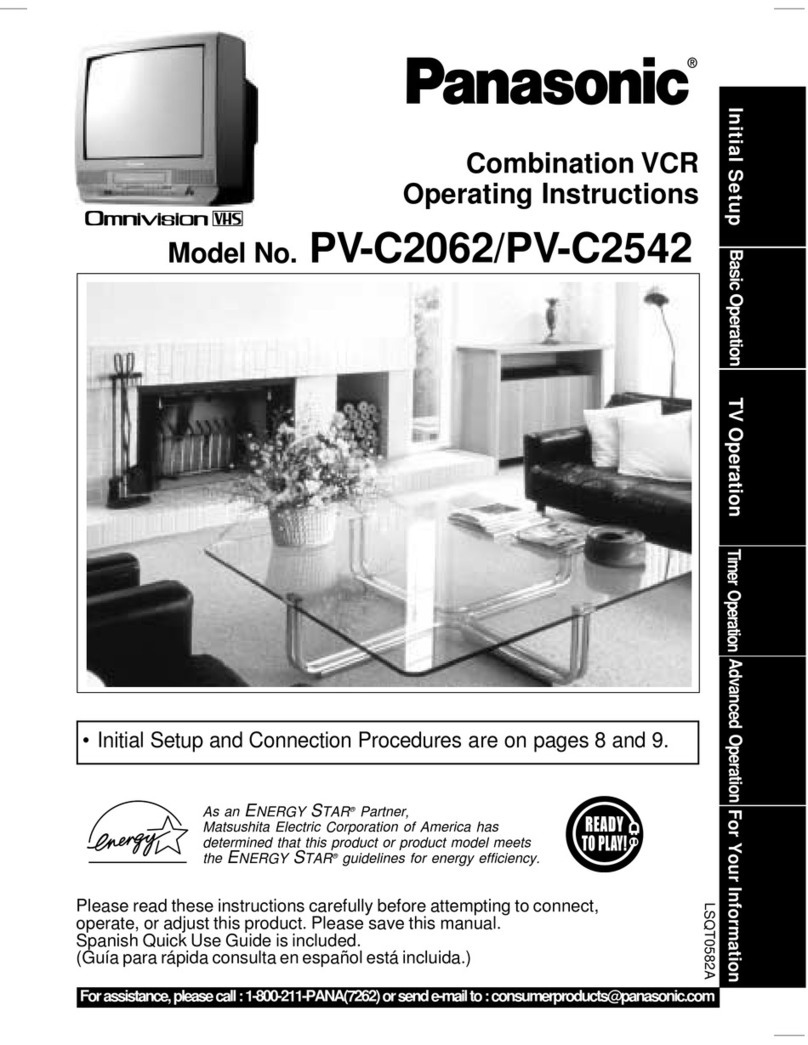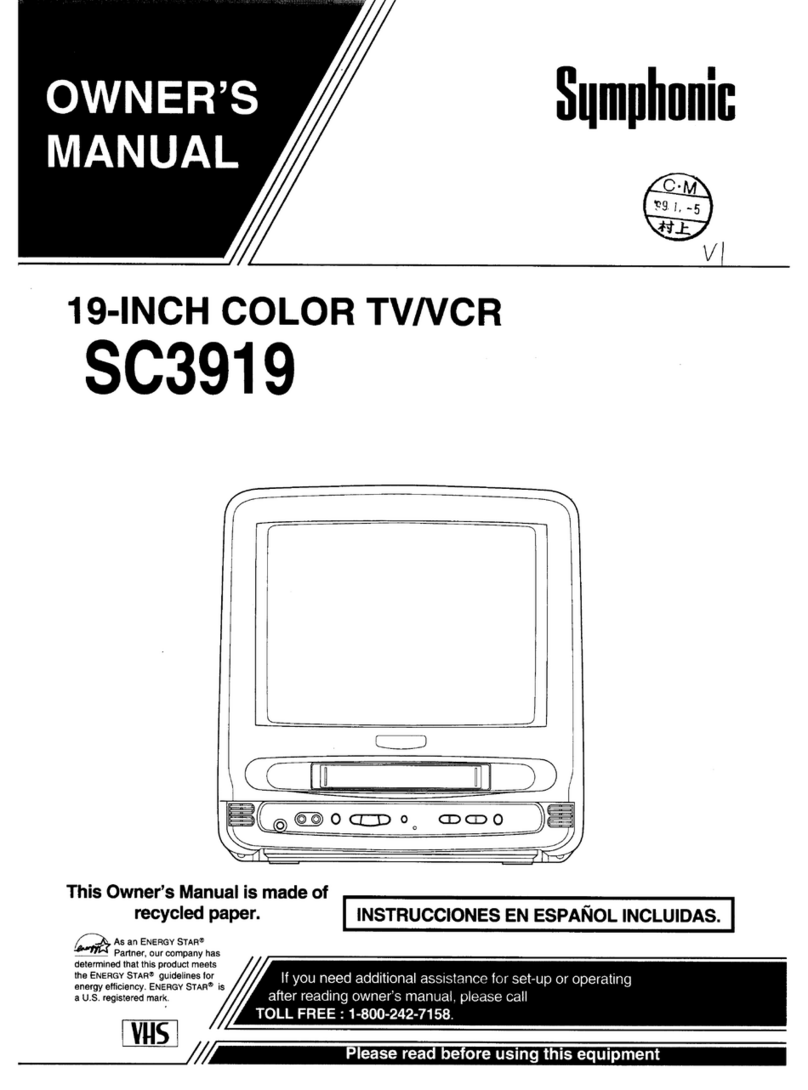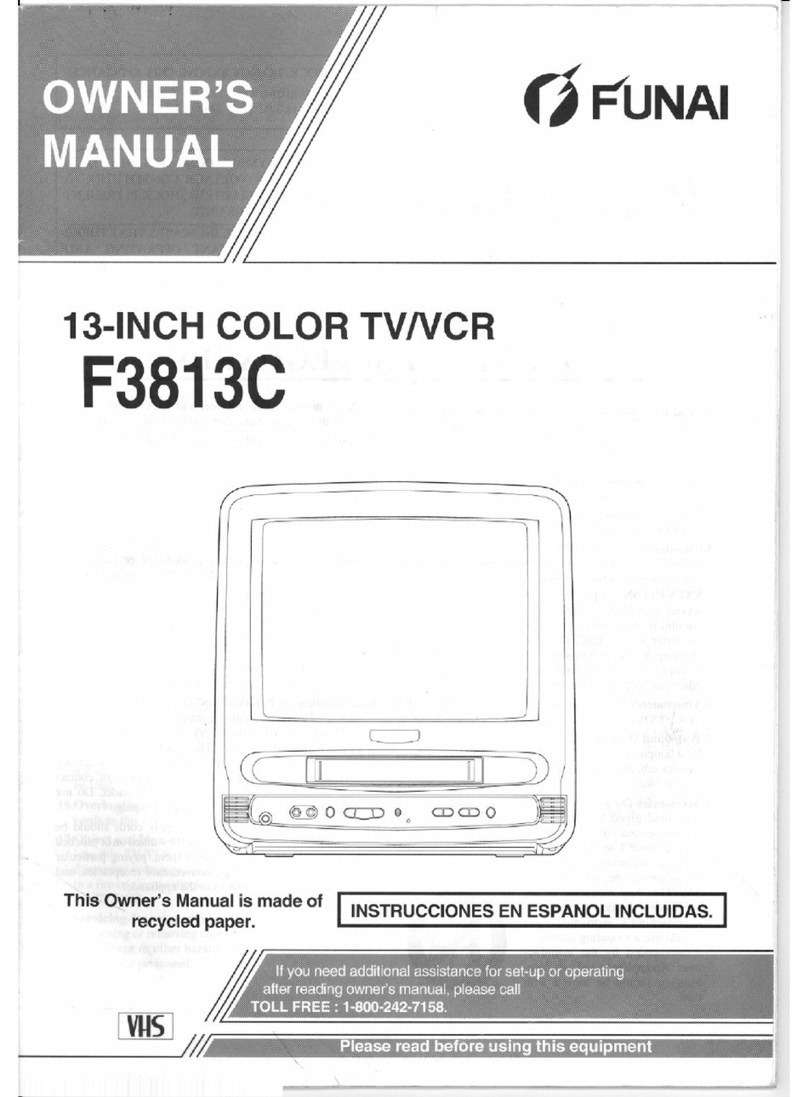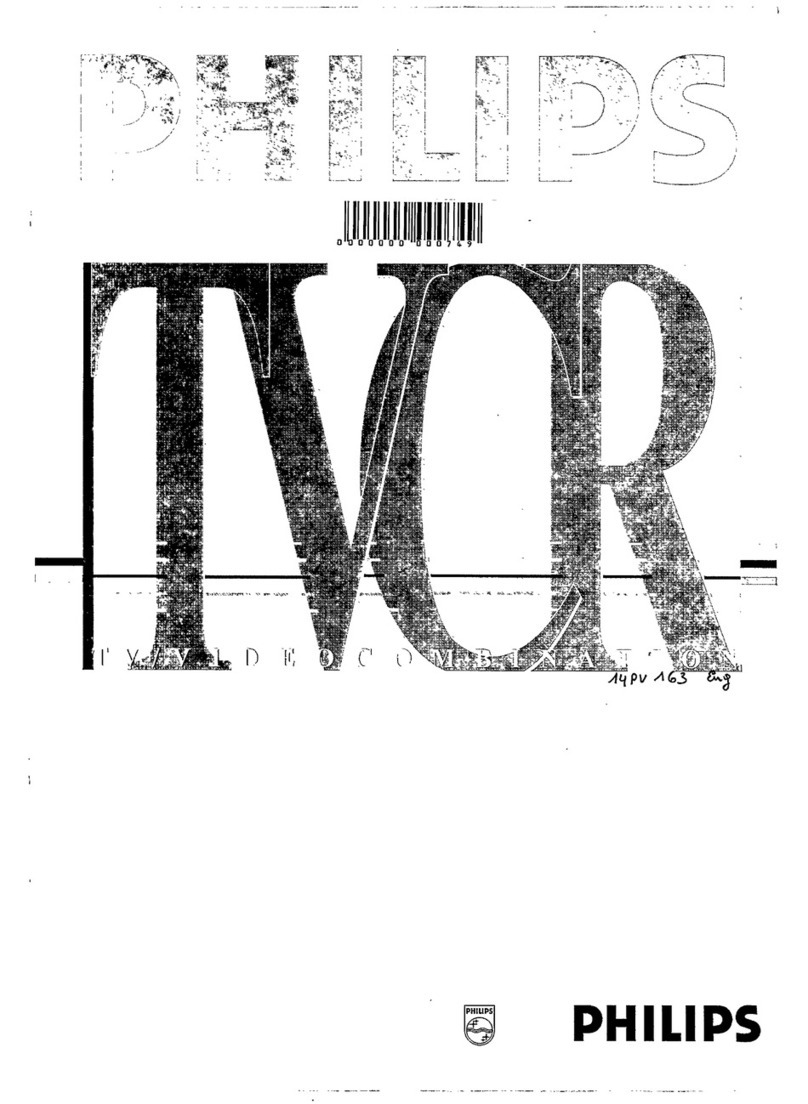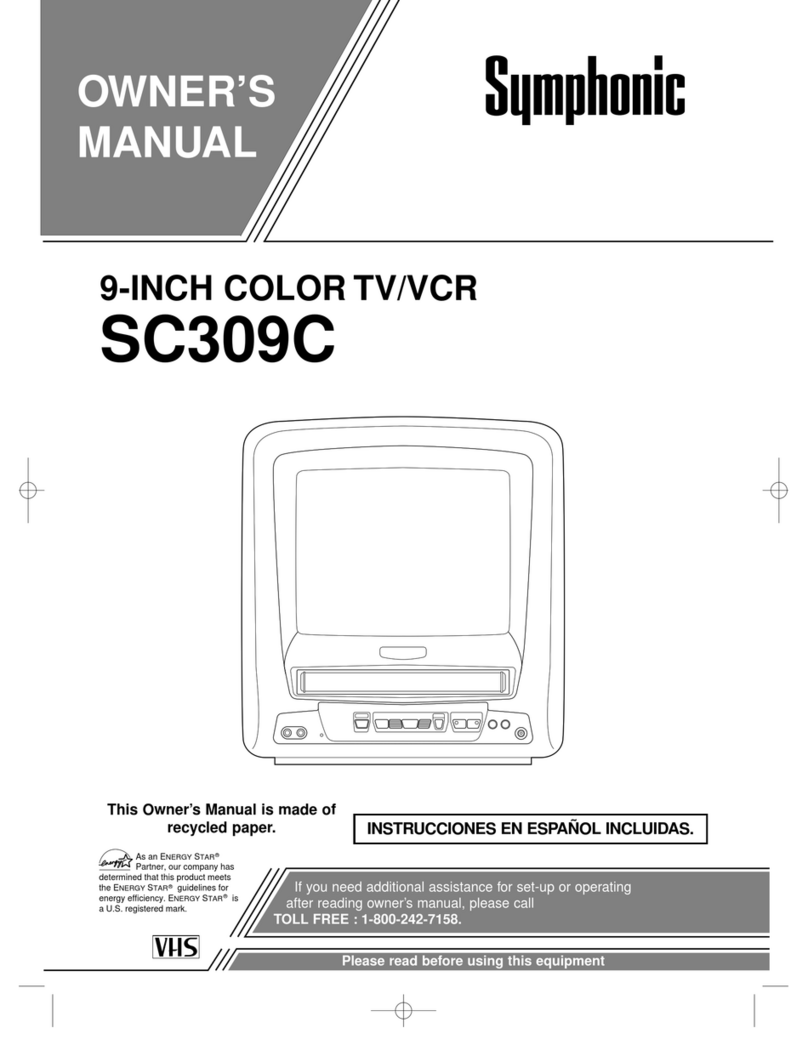Zenith TVBR1342Z User manual

SERVICE MANUAL
Product Type: Color TV /VCR Combo
Chassis: CC-002
Manual Series: CM152
Manual Part #: 923-03440
Model Line: C
Product Year: 2000
PublishedbyTechnicalPublications
Zenith Electronics Corporation
201 James Record Road - Huntsville, Alabama 35824-1513
May 2000
Printed in U.S.A.
CN DG 5k
Model Series:
TVBR1342Z
CONTENTS
General Information ......................................1
Servicing.....................................................2
Parts ..........................................................3
Exploded views.............................................4
Schematics ..................................................5
TVBR1942Z
TVBR2542Z

IMPORTANT SAFETY NOTICE
This manual was prepared for use only by properly trained audio-visual service
technicians.
When servicing this product, under no circumstances should the original
design be modified or altered without permission from Zenith Electronics
Corporation. All components should be replaced only with types identical to
those in the original circuit and their physical location, wiring and lead dress
must conform to original layout upon completion of repairs.
Special components are also used to prevent x-radiation, shock and fire hazard.
These components are indicated by the letter “x” included in their component
designators and are required to maintain safe performance. No deviations are
allowed without prior approval by Zenith Electronics Corporation.
Circuit diagrams may occasionally differ from the actual circuit used. This way,
implementation of the latest safety and performance improvement changes into
the set is not delayed until the new service literature is printed.
Caution: Do not attempt to modify this product in any way. Never perform
customized installations without manufacturer’s approval. Unauthorized
modifications will not only void the warranty, but may lead to property damage
or user injury.
Service work should be performed only after you are thoroughly familiar with
these safety checks and servicing guidelines.
Graphic symbols
The exclamation point within an equilateral triangle is intended
to alert the service personnel to important safety information in
the service literature.
The lightning flash with arrowhead symbol within an equilateral
triangle is intended to alert the service personnel to the presence
of noninsulated “dangerous voltage” that may be of sufficient
magnitude to constitute a risk of electric shock.
The pictorial representation of a fuse and its rating within an
equilateral triangle is intended to convey to the service personnel
the following fuse replacement caution notice:
CAUTION: FOR CONTINUED PROTECTION AGAINST RISK OF FIRE,
REPLACE ALL FUSES WITH THE SAME TYPE AND RATING AS MARKED
NEAR EACH FUSE.
SERVICE INFORMATION
While servicing, use an isolation transformer for protection from AC line shock.
After the original service problem has been corrected, make a check of the
following:
FIRE AND SHOCK HAZARD
1. Be sure that all components are positioned to avoid a possibility of
adjacent component shorts. This is especially important on items trans-
ported to and from the repair shop.
2. Verify that all protective devices such as insulators, barriers, covers,
shields, strain reliefs, power supply cords, and other hardware have been
reinstalled per the original design. Be sure that the safety purpose of the
polarized line plug has not been defeated.
3. Soldering must be inspected to discover possible cold solder joints, solder
splashes, or sharp solder points. Be certain to remove all loose foreign
particles.
4. Check for physical evidence of damage or deterioration to parts and compo-
nents, for frayed leads or damaged insulation (including the AC cord), and
replace if necessary.
5. No lead or component should touch a receiving tube or a resistor rated at
1 watt or more. Lead tension around protruding metal surfaces must be
avoided.
6. After re-assembly of the set, always perform an AC leakage test on all exposed
metallic parts of the cabinet (the channel selector knobs, antenna terminals,
handle and screws) to be sure that set is safe to operate without danger of
electrical shock. DO NOT USE A LINE ISOLATION TRANSFORMER DURING THIS
TEST. Use an AC voltmeter having 5000 ohms per volt or more sensitivity in
the following manner: Connect a 1500 ohm, 10 watt resistor, paralleled by
a .15 mfd 150V AC type capacitor between a known good earth ground
water pipe, conduit, etc.) and the exposed metallic parts, one at a time.
Measure the AC voltage across the combination of 1500 ohm resistor and
.15 mfd capacitor. Reverse the AC plug by using a non-polarized adaptor
and repeat AC voltage measurements for each exposed metallic part. Voltage
measured must not exceed 0.75 volts RMS. This corresponds to 0.5 milliamp
AC. Any value exceeding this limit constitutes a potential shock hazard and
must be corrected immediately.
X-RADIATION
1. Be sure procedures and instructions to all service personnel cover the
subject of x-radiation. The only potential source of x-rays in current TV
receivers is the picture tube. However, this tube does not emit x-rays when
the HV is at the factory-specified level. The proper value is given in the
applicable schematic. Operation at higher voltages may cause a failure of
the picture tube or high-voltage supply and, under certain circumstances
may produce radiation in excess of desirable levels.
2. Only factory-specified CRT anode connectors must be used.
3. It is essential that the service personnel have available an accurate and
reliable high-voltage meter.
4. When the high-voltage circuitry is operating properly, there is no possibility
of an x-radiation problem. Every time a color chassis is serviced, the
brightness should be run up and down while monitoring the high voltage
with a meter, to be certain that the high voltage does not exceed the
specified value and that it is regulating correctly.
5. When troubleshooting and making test measurements in a product with a
problem of excessively high voltage, avoid being unnecessarily close to
the picture tube and the high voltage power supply. Do not operate the
product longer than necessary to locate the cause of excessive voltage.
6. Refer to HV, B+, and shutdown adjustment procedures described in the
appropriate schematics and diagrams (where used).
IMPLOSION
1. All direct view picture tubes are equipped with an integral implosion
protection system; take care to avoid damage during installation.
2. Use only the recommended factory replacement tubes.
TIPS ON PROPER INSTALLATION
1. Never install any receiver in a closed-in recess, cubbyhole, or closely
fitting shelf space over, or close to, a heat duct, or in the path of heated
air flow.
2. Avoid conditions of high humidity such as: outdoor patio installations
where dew is a factor, near steam radiators where steam leakage is a factor,
etc.
3. Avoid placement where draperies may obstruct venting. The customer
should also avoid the use of decorative scarves or other coverings that
might obstruct ventilation.
4. Wall- and shelf-mounted installations using a commercial mounting kit
must follow the factory-approved mounting instructions. A product mounted
to a shelf or platform must retain its original feet (or the equivalent
thickness in spacers) to provide adequate air flow across the bottom. Bolts
or screws used for fasteners must not touch any parts or wiring. Perform
leakage tests on customized installations.
5. Caution customers against mounting a product on a sloping shelf or in a
tilted position, unless the receiver is properly secured.
6. A product on a roll-about cart should be stable in its mounting to the cart.
Caution the customer on the hazards of trying to roll a cart with small
casters across thresholds or deep pile carpets.
7. Caution customers against using a cart or stand that has not been listed
by Underwriters Laboratories, Inc. for use with its specific model of
television receiver or generically approved for use with TVs of the same or
larger screen size.
8. Caution customers against using extension cords. Explain that a forest of
extensions, sprouting from a single outlet, can lead to disastrous
consequences to home and family.
PRODUCT SAFETY SERVICING GUIDELINES FOR AUDIO-VIDEO PRODUCTS
i
A.C. Voltmeter
1500 OHM
10 WATT
Place this probe
on each exposed
metal part.
Good Earth Ground
such as the Water
Pipe, Conduit, etc.
0.15uF

CM152 H13C01L - SAFETY
and confirm a good signal is being displayed. Reduce Brightness
and Contrast settings until the picture is well extinguished.
Observe the Anode Voltage meter reading and compare with the
table below. If the voltage reading is higher than the maximum,
verify circuit component values and proper operation.
EQUIPMENT REQUIRED
a) Video Generator
b) HV DC meter (0 to 40kv, high Z)
TEST PROCEDURE
To verify the Shutdown Circuit is working properly, proceed with the
following procedure.
1. Istall a 100K ohm variable resistor across R529.
2. Turn the unit on and set the input A.C. Voltage to 130VAC.
3. Adjust the variable resistor from maximum to minimum. During this
adjustment monitor the anode voltage to the C.R.T. this voltage
SERVICING GUIDELINES FOR X-RADIATION PROTECTION
ii
X-RAY PROTECTION CIRCUIT DESCRIPTION
If the High Voltage on Anode off (FB401) F.B.T. is increased, the
Heater voltage will increase at the same time. The voltage from
Heater is rectified by D412, and then the dc voltage is divided by
R420 and R442. At normal operation, the voltage V1 on pin 85
of IC-I1001 is 5.9V. If HV exceeds its safety level, Q1023 is
switched on, resulting in V1 loss on pin 85 this in turn causes a
lossof horizontaldrive toq405, therebyshutting downthe unit,
activating H.V. Shut Down. The X-Ray protect line also monitors
CRT ANODE HIGH VOLTAGE MEASUREMENT PROCEDURE
Each screen size has its own safe Anode Voltage and shutdown
voltage. Critical Safety Components (designated with shading in the
component parts list) are designed to operate the CRT at a safe
operating Anode voltage and provide proper shutdown thresholds.
If replacement of any of these components are deemed necessary, it
is important to use original Zenith replacement components. After
replacement is made, confirm proper Anode Voltage using the fol-
lowing procedure.
Measurement of the CRT Anode Voltage must be performed using a
high impedance high voltage meter, with no visible raster on the
screen, and operating at nominal horizontal scanning frequency.
Connect a strong broadcast signal (or TV signal generator
operating at 15.734kHz horizontal scanning rate) to the RF input.
After the CRT is discharged, connect a high impedance high
voltage meter at the distribution point. Turn the television on
SCREEN B+ VDC HV NOM HV MAX
SIZE (0 BEAM) KV KV
13 128.5+/-2% 26kv 29kv
COMPONENT LEVEL REPAIR
19
25
128.5+/-2%
128.5+/-2%
28kv
31.5kv
33kv
34kv
the B+ line via D408 which is fed by a voltage divider circuit
consisting of R441,R440 and R439.
should not exceed the maximum H.V. listed in the chart above. If
this voltage exceeds the maximum H.V. for the size C.R.T. listed,
the X-Ray protect circuit is not working properly and must be
repaired prior to returning the unit to the customer.


CM152 TOC TVBR
TABLE OF CONTENTS
SECTION 1 GENERAL INFO / REMOTE CONTROL
SPECIFICATIONS .......................................................... 1-1
SECTION 2 SERVICING
DISASSEMBLY INSTRUCTION .......................................... 2-1
REMOVAL OF MECHANICAL PARTS AND PC BOARDS........... 2-1
REMOVAL OF DECK PARTS.............................................. 2-5
REMOVAL OF ANODE CAP .............................................. 2-10
KEY ABBREVIATIONS.................................................... 2-12
SERVICE MODE............................................................ 2-14
PREVENTIVE CHECKS AND SERVICE INTERVALS ................. 2-15
NOTE FOR REPLACING OF MEMORY IC ............................. 2-17
SERVICING FIXTURES AND TOOLS ................................... 2-19
PREPARATION FOR SERVICING ........................................ 2-20
MECHANICAL ADJUSTMENTS.......................................... 2-21
ELECTRICAL ADJUSTMENTS............................................ 2-25
SECTION 3 PARTS LIST
COMPONENT PARTS LIST ............................................... 3-1
SECTION 4 EXPLODED VIEW
13/19" MECHANICAL EXPLODED VIEW ............................ 4-1
25” MECHANICAL EXPLODED VIEW ................................. 4-2
13/19" CHASSIS EXPLODED VIEW .................................. 4-3
25” CHASSIS EXPLODED VIEW ....................................... 4-4
13/19/25" UPPER DECK EXPLODED VIEW ........................ 4-5
13/19/25" LOWER DECK EXPLODED VIEW ........................ 4-5
SECTION 5 SCHEMATIC
13/19" POWER SUPPLY CIRCUIT ..................................... 5-1
13/19" Interconnect Diagram ....................................... 5-1
13/19" Main Micro Block Diagram ................................. 5-2
13/19" Audio Block Diagram ........................................ 5-3
13/19" Video Block Diagram ........................................ 5-4
25" Interconnect Diagram ............................................ 5-5
25" Main IC Block Diagram .......................................... 5-6
25" Audio IC Block Diagram ......................................... 5-7
25" Video IC Block Diagram ......................................... 5-8
13/19" Primary Power Circuit ....................................... 5-9
13/19" Deflection Circuit ............................................. 5-10
13/19" Main Microprocessor Circuit ............................... 5-11
13/19" Chroma Circuit ................................................. 5-12
13/19" Head Amp Circuit ............................................. 5-13
13/19" Audio Amp Circuit ............................................ 5-14
13/19" CRT Circuit....................................................... 5-15
13/19" Deck Circuit ..................................................... 5-16
13/19" Input/Output Circuit ......................................... 5-17
13/19" Control Panel Circuit......................................... 5-18
25" Primary Power Circuit ............................................ 5-19
25” Deflection Circuit .................................................. 5-20
25" Main Micro Circuit ................................................. 5-21
25" Chroma Circuit...................................................... 5-22
25" Head Amp Circuit .................................................. 5-23
25" Audio Amp Circuit ................................................. 5-24
25" CRT Circuit ........................................................... 5-25
25" Deck Circuit.......................................................... 5-26
25" Input/Output Circuit .............................................. 5-27
25" Control Panel Circuit.............................................. 5-28
13/19" Main PCB Top Layout ........................................ 5-29
13/19" Main PCB Bottom Layout ................................... 5-30
13/19" Control Panel & Deck PCB Layout ....................... 5-31
25" Main PCB Layout ................................................... 5-32
25" System Control PCB Top Layout ............................... 5-33
This manual suits for next models
2
Table of contents
Other Zenith TV VCR Combo manuals
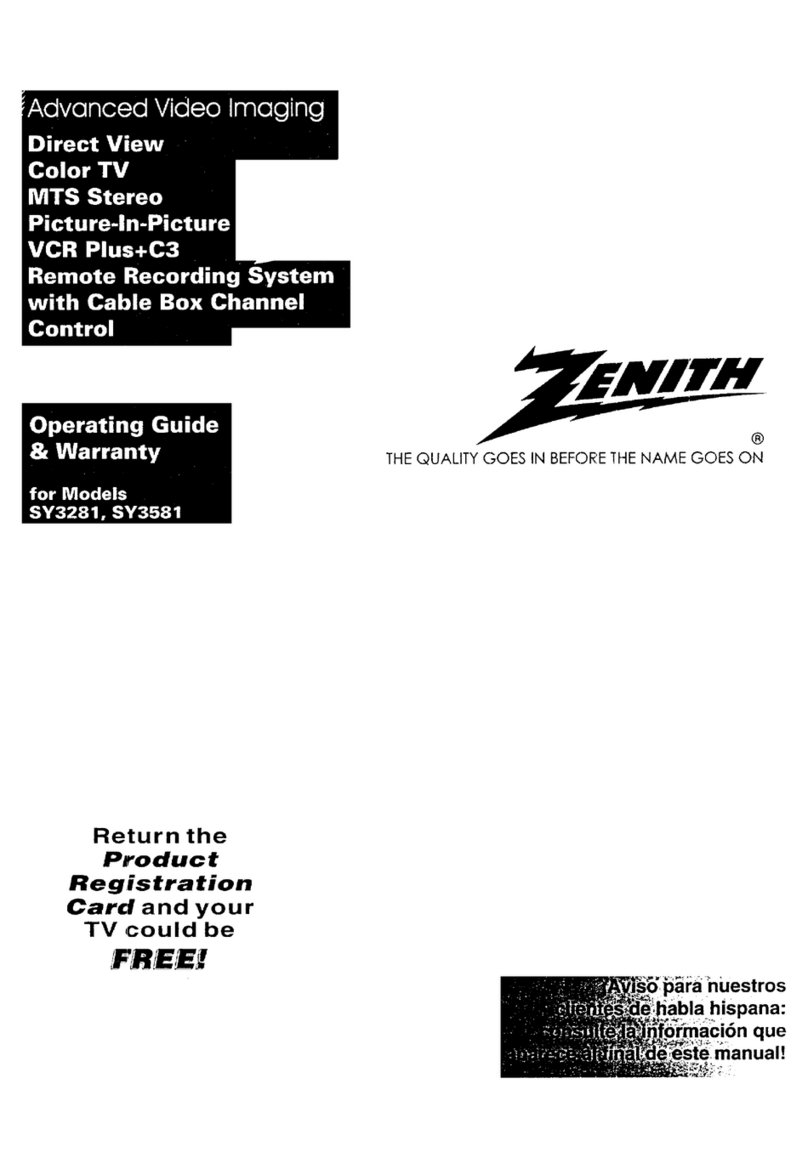
Zenith
Zenith SY3581 Operating and maintenance manual
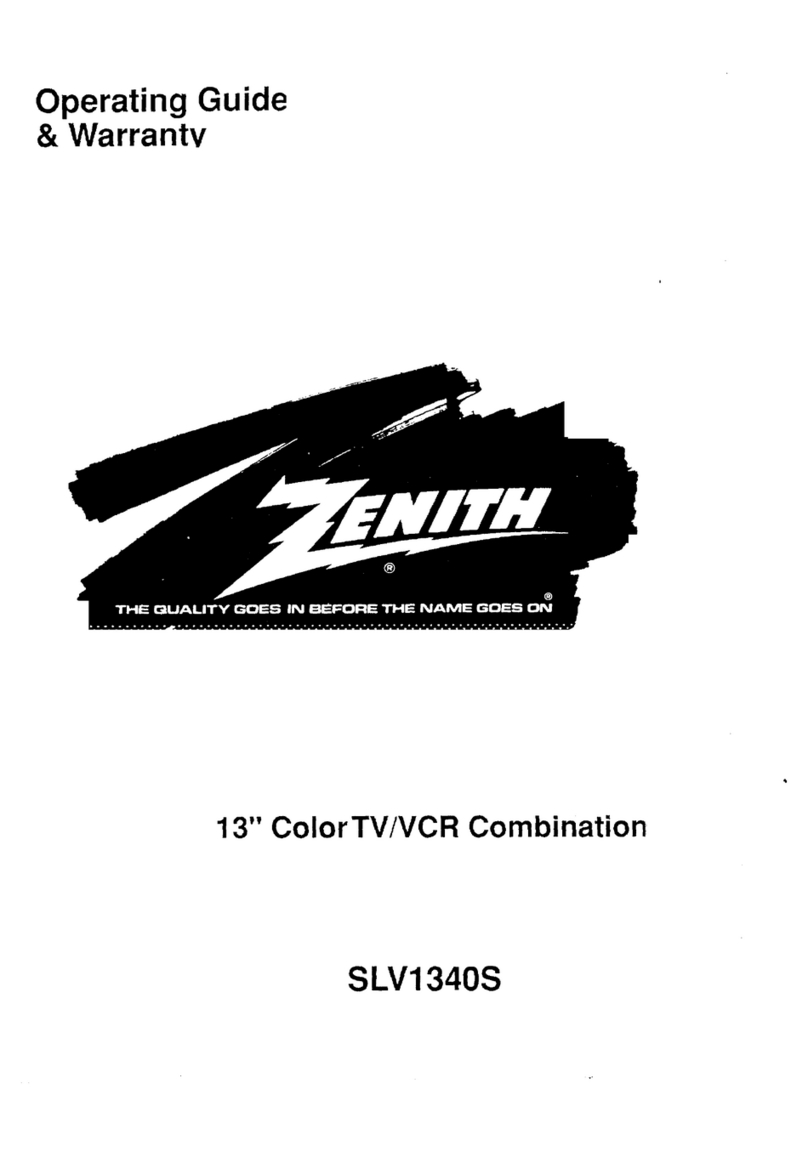
Zenith
Zenith SLV1340S Operating and maintenance manual
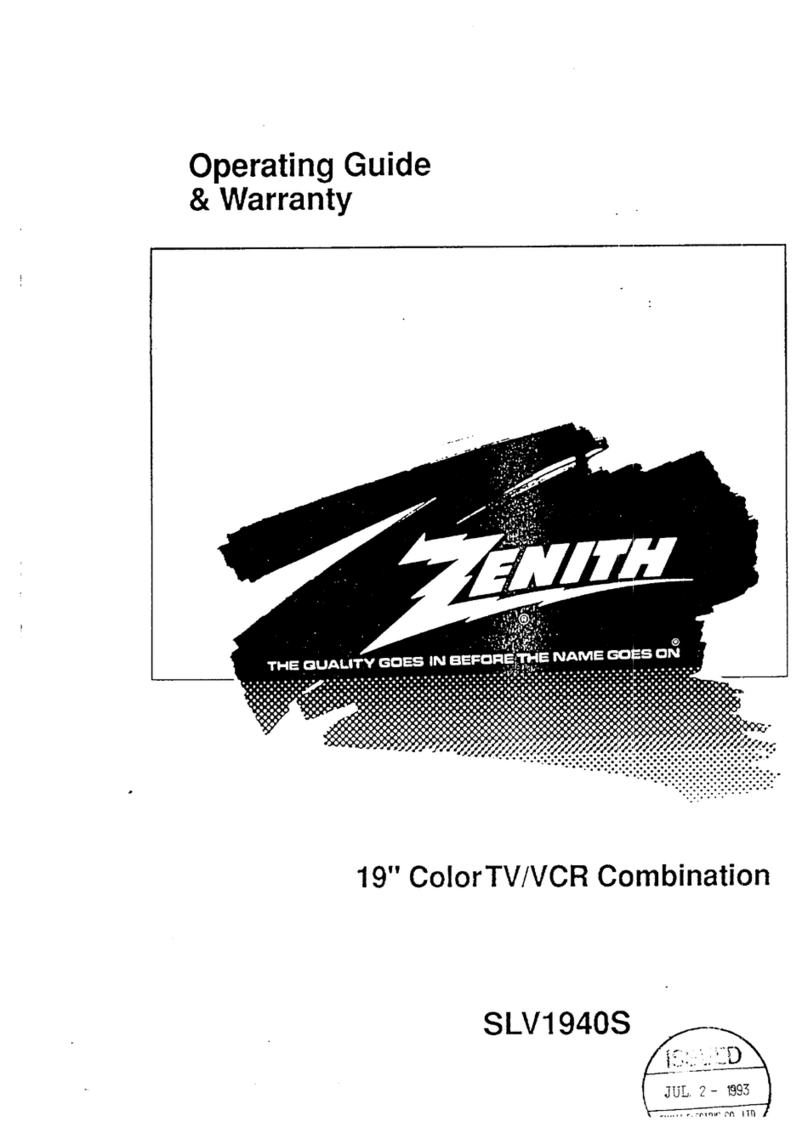
Zenith
Zenith SLV1940S Operating and maintenance manual

Zenith
Zenith TVBR2742Z User manual
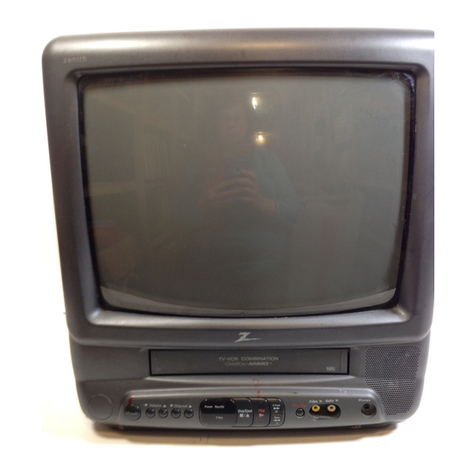
Zenith
Zenith TVBR1322Z User manual
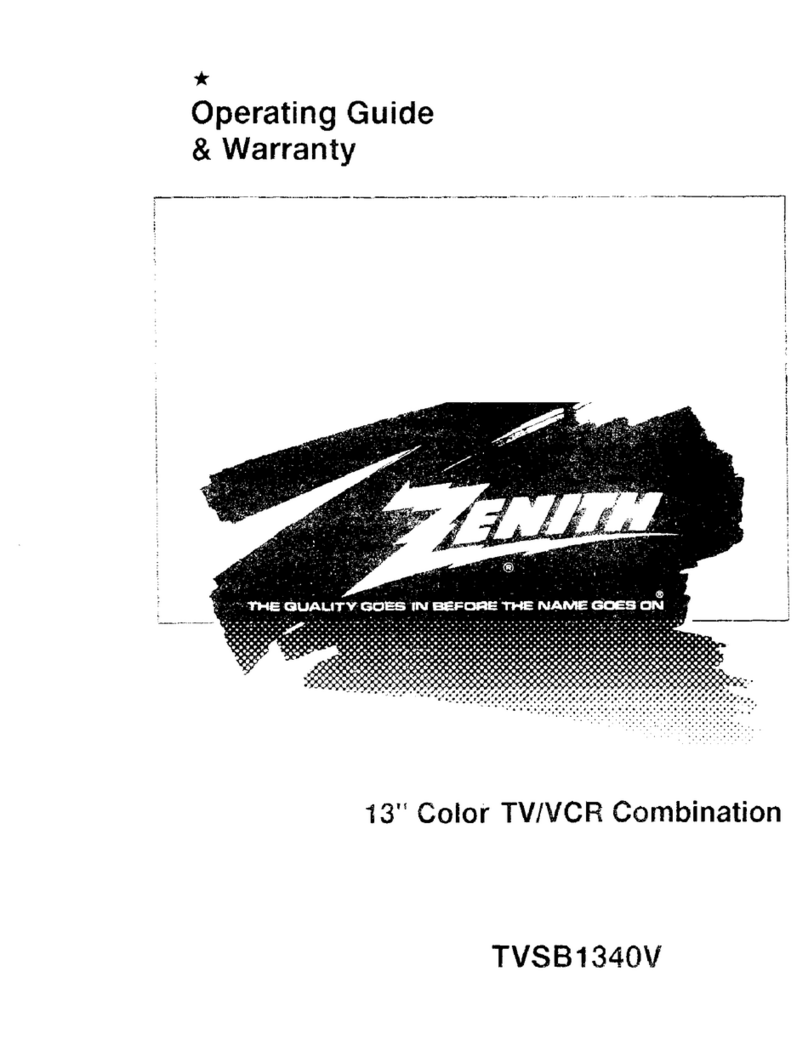
Zenith
Zenith TVSB1340V Operating and maintenance manual
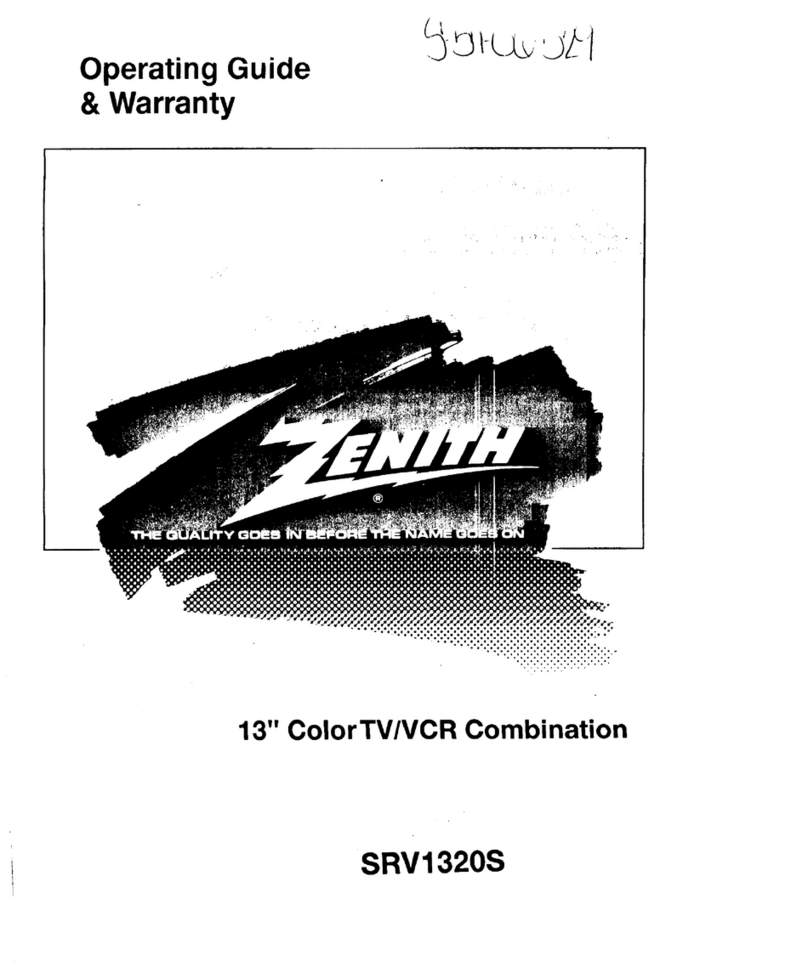
Zenith
Zenith SRV1320S Operating and maintenance manual
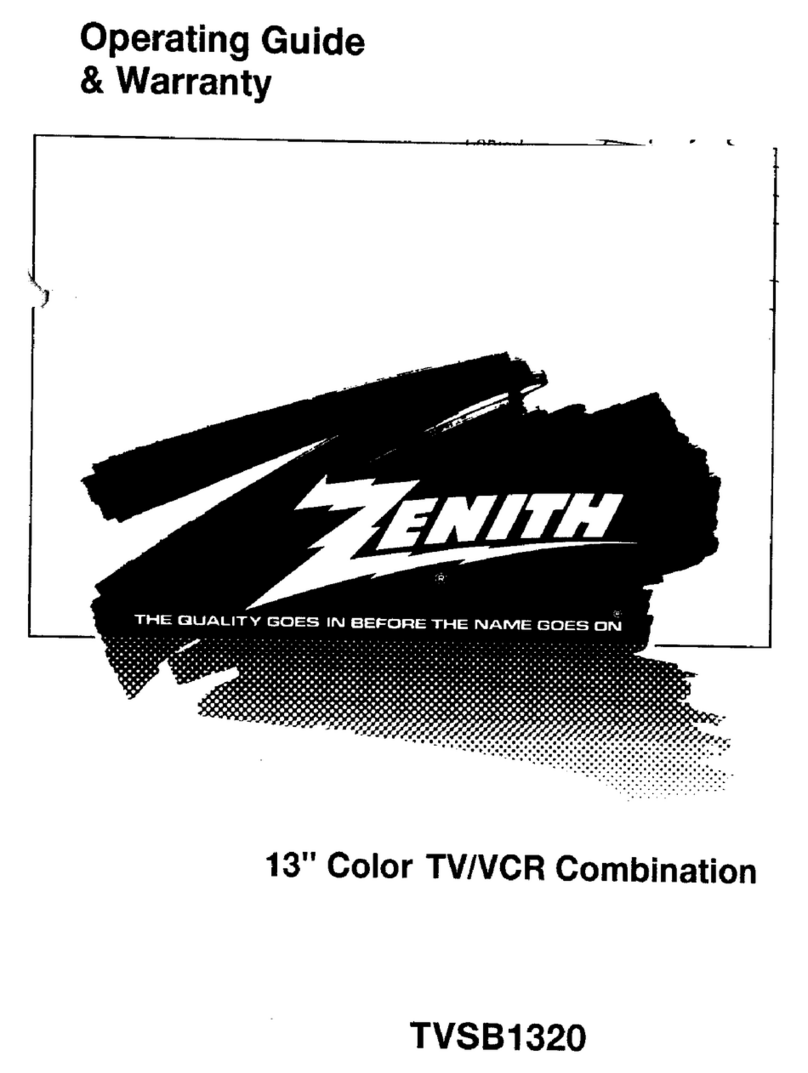
Zenith
Zenith TVSB1320 Operating and maintenance manual

Zenith
Zenith TVSB1320V Operating and maintenance manual
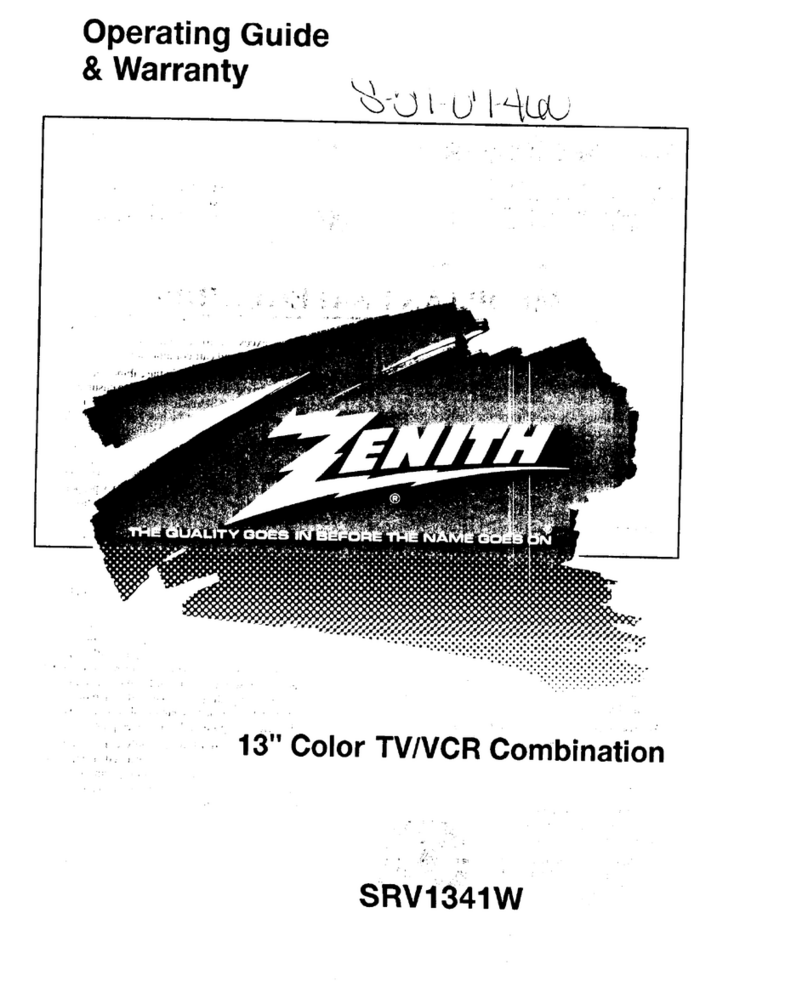
Zenith
Zenith SRV1341 Operating and maintenance manual
